When I initially began learning about a whole food, plant-based diet, I was most intrigued by oil-free cooking. I thought the idea of it was completely crazy. How does one cook without oil? I assumed when cooking without oil, everything would stick to the pan, nothing would turn out crispy, and I would need never be able to eat a salad again. Fast forward a few months, a lot of reading, and numerous recipe experiments. Now, if something has a lot of oil in it, I can recognize the masking of taste and texture that lots of oil gives to foods. I actually prefer cooking without it. I don’t miss it AT ALL! It is a little surprising. The best part is that I really do enjoy recreating recipes oil-free and passing them along to my friends, family, and followers. Above all, I certainly don’t miss the extra hidden calories!
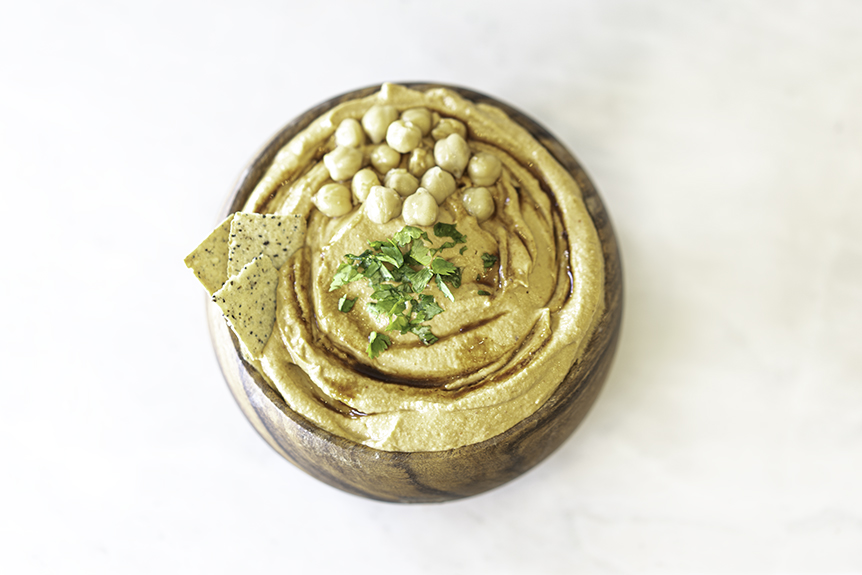
Why Cook Without Oil?
Oils are refined foods. For optimal health (and weight) we should aim to eat as many ‘whole’ foods as possible. This gives our bodies foods that have fiber, protein, vitamins, and minerals still intact. High fiber = a healthy gut = LOTS of health benefits including a healthy weight and heart. We all know we should be eating ‘whole’ foods. That is why we should lean towards things like whole fruits instead of fruit juices, a bowl of steel cut oats over an oatmeal cookie, whole grains instead of refined grains, naturally sweet foods over refined sweeteners.
Simply put …
Instead of drizzling avocado oil on our salad, dice up an avocado on top. Instead of mixing up a dressing with olive oil in it, dice up some olives and mix them in your salad or your dressing. Use sesame seeds ground into tahini instead of sesame oil, coconut milk and the meat of a coconut instead of coconut oil, and peanuts instead of peanut oil.
Why Should We Be Cooking Without Oil? Isn’t Oil Good For Us?
Yes, the oils in avocados and olives and even coconuts are good for us, and in their whole, pure forms can be cardio-protective. But when they are refined, they are stripped of fiber and nutrients. They start out nutritious but after being pressed into oil they consist of 100% fat. This leaves extraordinarily little room for the fiber, nutrients and vitamins.
If you are not worried about all of that scientific babble that I just spewed out, but you are interested in your weight, your waste size, and/or your calorie intake, listen up. If you add just two tablespoons of avocado oil to your pan of roasted veggies. With that, you would be consuming 250 calories and 30 grams of fat but NO fiber and NO vitamins or minerals! On the other hand, if you eat one avocado you are still consuming the same fat and calories. However, you offset that with a whopping 13 grams of fiber, 4 grams of protein, lots of potassium, vitamins, and minerals that have not been stripped away. Bring on the guacamole + count me in 💚!
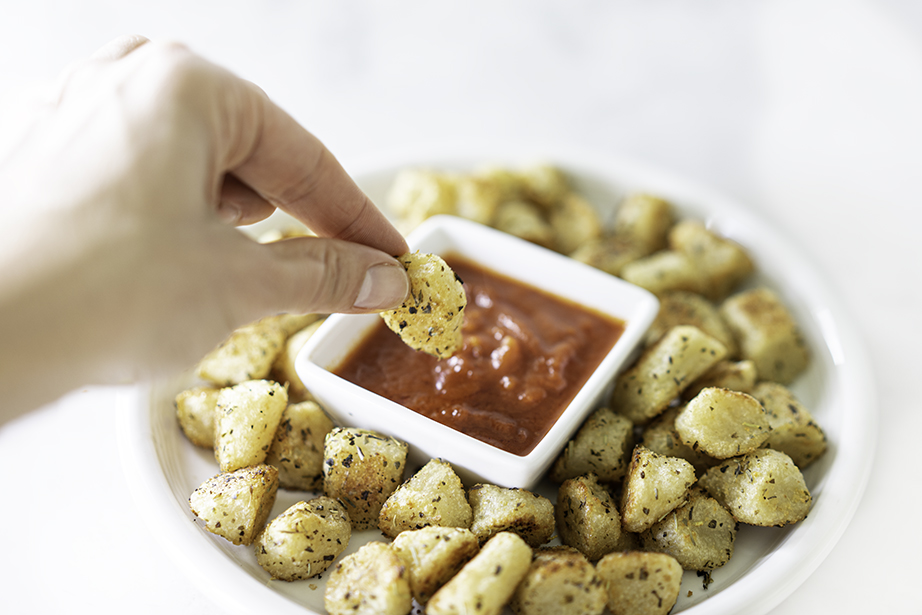
Let’s Talk Saturated Fat
A diet high in saturated fat can lead to heart disease. No surprise there. We have heard for many years about animal fats having negative effects on LDL cholesterol, clogging our arteries, and contributing to a whole host of negative health conditions. When I first began researching this, I learned that we should also avoid oils in addition to animal fats. I was confused and this was new to me so my research continued. I read Dr. Michael Greger’s book, “How Not To Die”, and watched the documentaries “Forks Over Knives” and “Game Changers“.
These sources clearly remind us that meals high in saturated fat (think Big Mac + French Fries) could harden our arteries within minutes. But I do not eat those things anyway 🤔. What they helped me further understand is that this same inflammation and paralysis of our arteries that happens when we eat a giant hamburger with cheese could also happen after we eat oils 😲. That was not clear to me before, but now I understood. Are you beginning to get it? See … maybe you do not need to sauté that onion in oil after oil!!!!
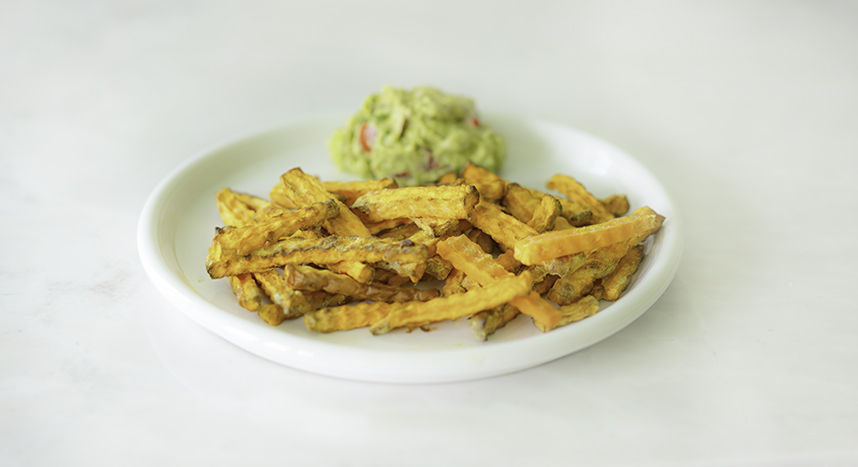
The Basics of Oil-Free Cooking:
I think I have made my case for why oil-free cooking is so important. Let’s move on to how you can actually be successful at it.
Choose the right cookware:
- Invest in a silicone baking mat. This is life changing. Nothing sticks to it. For stove-top cooking look for Teflon-free non-stick cookware. I use red copper pans and a wok religiously. They both work fabulously. Other options are enamel-coated cast iron or even ceramic pans.
How to sauté or stir-fry without oil:
- Instead of oil use a few tablespoons of water or broth and stir your food frequently to prevent sticking. If you are sautéing onions, sprinkle them with salt and this prevents them from sticking to the pan at all! Give this a try, you will save hundreds of calories in your food by never using oil again to sauté an onion! Thank me later 😊.
Bake without oil (and your baked goods still turn out moist):
- Fruit! Mash a banana, substitute the oil for applesauce, or soak a few dates in hot water and run them through your food processor. Peanut butter, tahini, a mashed avocado, soaked chia seeds or almond butter all work too in a 1:1 substitution.
Roast vegetables, potatoes, or tofu:
- Step one in most recipes is to coat your veggies in oil. Do not do it! You do not need to! They really do eventually brown. Turn the heat down by 5 or 10 degrees and be patient! Use a silicone liner or parchment paper will also do. If you absolutely MUST use oil, give them a light spray instead. Not drizzle, not coat, and do not drown them in the spray. This is a good way to bridge the gap until you are ready to ditch it all together. When you are ready, simply sprinkle your food with herbs and spices and pop them in the oven.
Frying!
- Your foods can actually be crispy without deep frying. Let’s face it, when you choose not to fry your food, you are doing this with the understanding that you are going to yield a different taste and texture. No surprise. I am willing to give up a little crunch in my food to keep my arteries open. Something you will need to decide for yourself. The first thing you need is an air fryer! AKA a life changing kitchen gadget. Trust me on this one. Some other helpful things to crisp and coat your food are arrowroot and nutritional yeast. Again, hundreds (possibly even thousands) of calories saved by never dunking and drowning your beautiful foods in a bath of hot oil. You are welcome. New to air frying? Start here with my article Air Fryer 101.
Salads + Dressings:
- Click here! It is totally doable. I go into full detail on how to make an awesome salad without oil + my favorite oil-free dressing recipes.
Indian cooking:
- If you are familiar with traditional Indian dishes, they typically start out by heating mustard seeds and/or cumin seeds in a hot pan with oil until they “pop” or sizzle. My advice on this is to use a little spray if you like when you are initially transitioning over to complete oil-free cooking. Put the seeds in the pan first and then lightly spray them. They will “pop” with this method. When you are ready to graduate from using the oil spray, another trick is to grind your seeds into a powder form or use only powdered spices, and sprinkle the powder in after your initial ingredients are hot. This works really well.
- Another option is to ‘dry roast’ the spices. Be careful not to burn them! Heat them as you would when using oil. You will need to use a slightly lower heat and be patient. When the color or texture you are looking for is achieved, remove them from the pan and proceed with your next step which typically is to sauté onions. Do so by sprinkling the onions with salt and adding a tablespoon of water as needed. Once this step is done, add your dry roasted spices back in along with your powdered spices. This is the way I do it and I don’t find the taste of the dish changes with this method.
My favorite oil-free recipes:
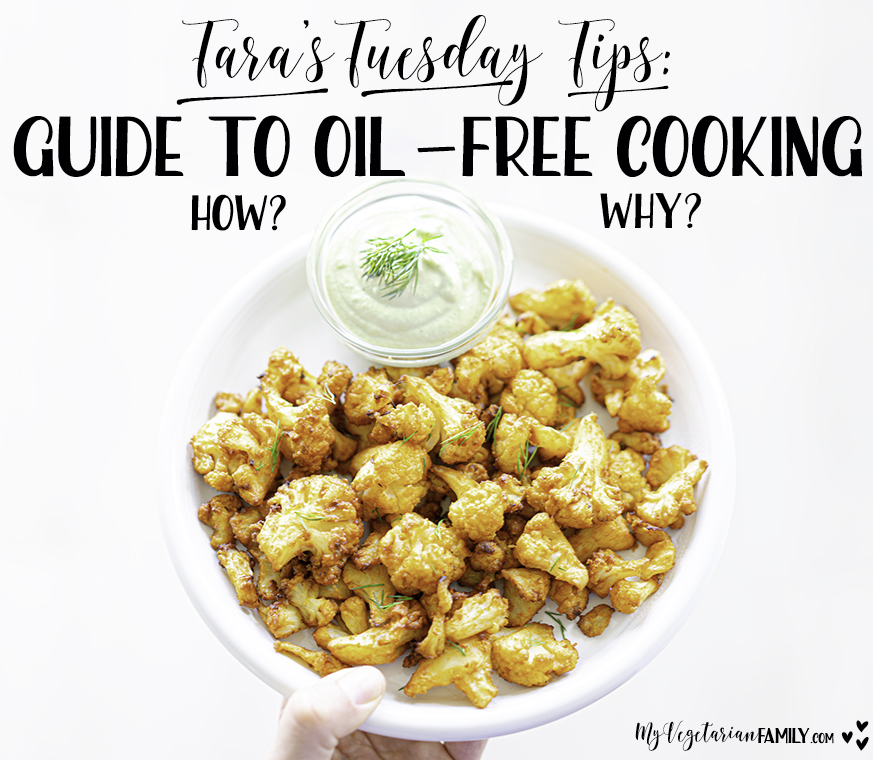
⭐️Do you have more questions about Oil-Free Cooking? Leave a comment below!
📸I love to see your creations! Follow me on Instagram @myvegetarianfamily and hashtag it #myvegetarianfamily
💌Be sure to subscribe here to my weekly emails for tips and recipes so that you never miss a veggie thing!


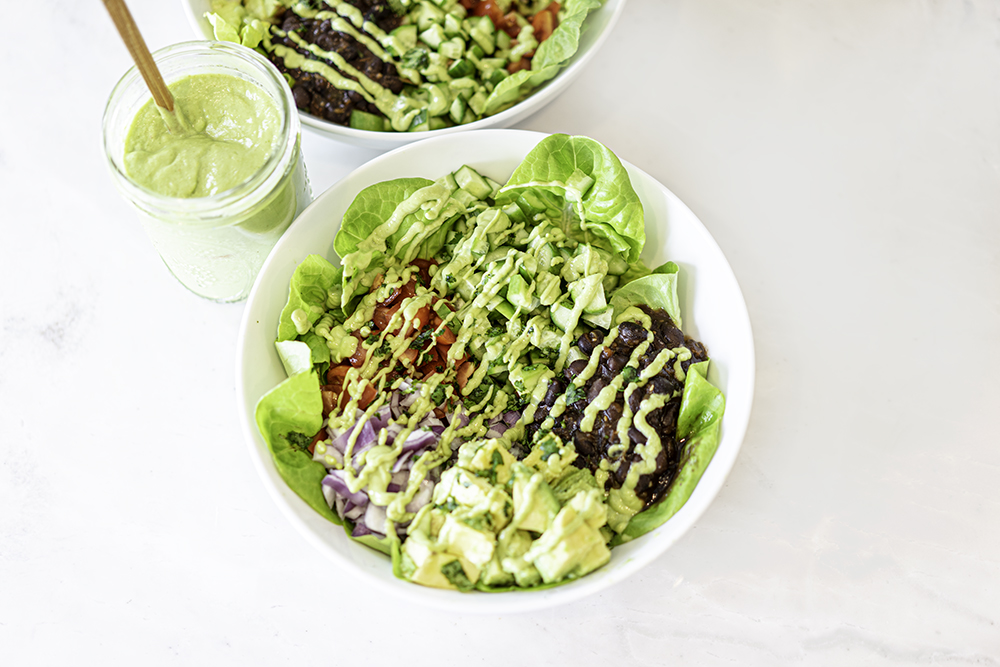

11 thoughts on “Guide to Oil-Free Cooking”